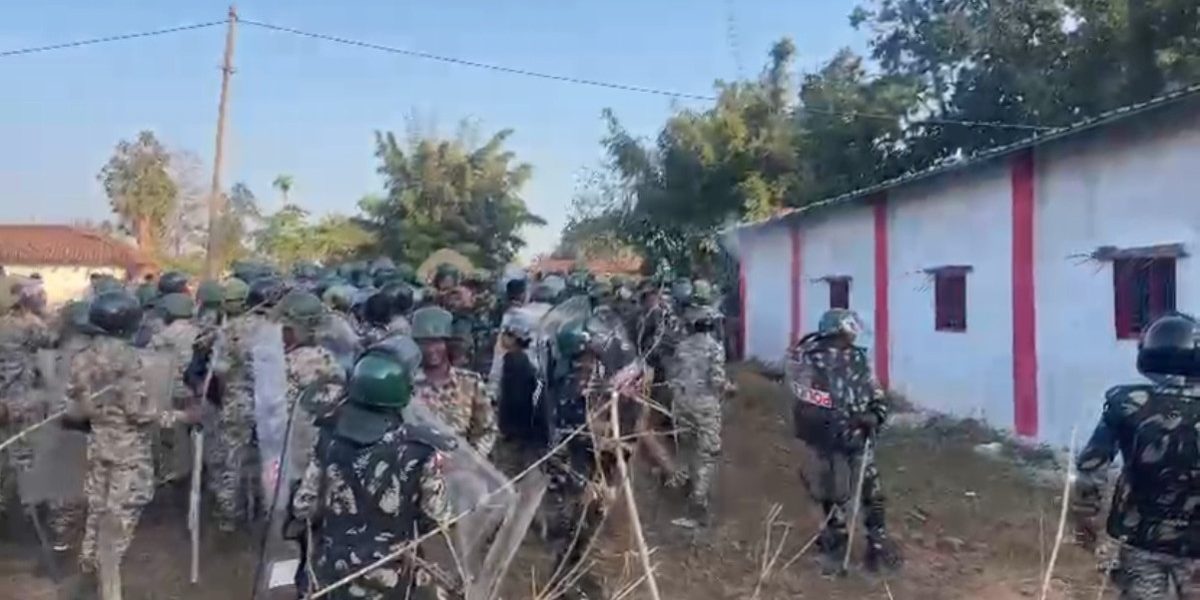
SRINAGAR, Jammu and Kashmir—The Indian government has commenced preparations to redraw the electoral boundaries in Indian-administered Kashmir two years after New Delhi rescinded the disputed region’s semi-autonomous status and introduced tighter federal controls.
In 2019, New Delhi hoped that ratcheting up federal control would make it easier to subdue Kashmir’s population and many groups’ calls for self-determination. It has since unleashed the wrath of federal agencies on local politicians, traders, publishing houses, and even government employees who have been or potentially could become sources of dissent.
The crackdowns have also targeted protesters, members of civil society, and journalists, who are charged under draconian anti-terrorism laws that guarantee lengthy pretrial detentions and make bail an exception.
Now, the delimitation program envisions breaking up the electoral constituencies of the erstwhile semi-autonomous state into several new voter units in a manner that’s likely to give numerical heft to the southern region of Jammu, where there is a larger concentration of Hindu voters.
Altered demographics, when combined with a clever reconfiguration of electoral constituencies, would allow Hindu-nationalist politicians to realize their long-standing goal of installing a Hindu chief minister in Kashmir.
Prime Minister Narendra Modi’s Hindu-nationalist government has also started to enforce hundreds of federal Indian laws and policies in Kashmir, echoing similar Chinese measures in Hong Kong.
New Delhi has dismantled structures of self-government in Kashmir with remarkable speed. The Indian government opened ownership of land in Indian-administered Kashmir to outsiders, made it easy to acquire domicile rights, and overturned historic land reforms.
This was followed by a move that reduced the share of Kashmiri candidates entering the Indian civil service from 50 percent to 33 percent, which in the future will increase the number of nonlocal officers in Kashmir’s administration.
The federal government has also empowered the Indian armed forces to declare any area in the disputed region as “strategic” and ended the 131-year reign of Urdu as the sole official language of the region.
Unlike other Indian states, these laws and policies were not applicable in the region until August 2019 as Kashmir had its own constitution and its legislative assembly had exclusive power to make the laws.
Jammu and Kashmir is India’s only Muslim-majority region. Before 2019, Hindu-nationalist groups had long campaigned for the annulment of Kashmir’s special status enshrined in (now repealed) Article 370 of the Indian Constitution. Another feature of this extinguished legislation was Article 35A, which restricted the purchase of land to local residents alone.
In August 2019, Modi discarded both laws in a highly controversial move that has since soured India’s relations with Pakistan and China.
This year, New Delhi started rolling out residency permits for non-Kashmiri Indians, escalating fears that the Kashmir Valley, wedged between the snowy Himalayas, would be swamped with outsiders, turning the local Muslim-majority population into a political minority in their homeland, much as Han Chinese settlement has demographically transformed Tibet and Xinjiang. Last October, India’s Ministry of Home Affairs issued new land laws for Indian-administered Kashmir, making it possible for any Indian citizen to buy land in the region.
While the federal government, led by Modi’s Bharatiya Janata Party (BJP), has openly pursued a policy of electoral engineering in the region, the delimitation process provides a smokescreen and gives it constitutional validity—while still achieving the goal of disempowering Kashmiri Muslims.
A delimitation commission overseeing the entire process draws on numbers supplied by the decennial national population census mandated by the Indian Constitution.
However, in 1976, when India was under a national state of emergency, its Parliament passed an amendment freezing all delimitation so that it remained based on the 1971 census. This freeze was put in place at a time when India was struggling to control its booming population. To effectively implement the state policy of population control, a freeze was put on the delimitation exercise, which would electorally penalize those states where the population grew faster, until the 2001 census.
This has divided the country on North-South lines. Most of the Southern states have achieved zero population growth, while the Northern states still have a very high fertility rate. If India carries out the delimitation exercise as per the recent census figures, the Northern states would gain many seats, while the Southern states would lose some.





